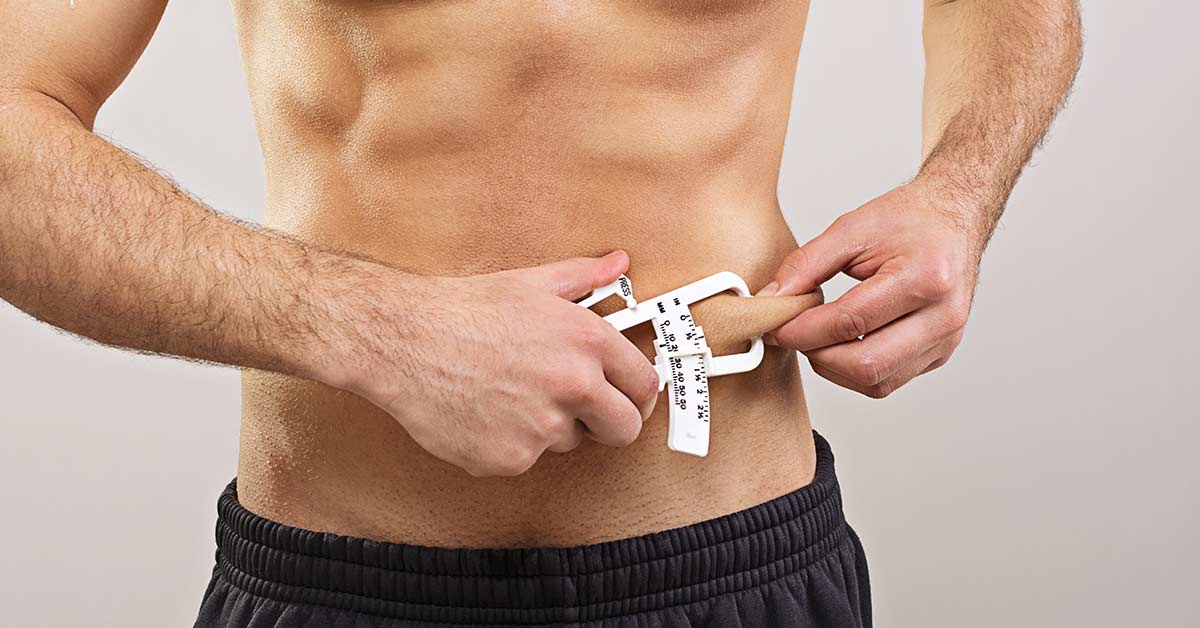[mashshare][freelap-power-lift]

Body composition expert Jordan Moon, PhD, offers significant suggestions for measuring body composition with an athletic population. I hear of many institutions and organizations that use the BOD POD as their primary tool to assess fat mass and lean body mass even though their protocols don’t reveal valid or reliable information. Dr. Moon outlines the correct steps to take to ensure your testing is accurate—provided the usual standard error of measurement—and that the data is therefore actionable. You would hate to get athletes up as early as 6:00 am for testing and gather information that could be 10-15% off.
Let’s take a look at the critical answers Dr. Moon gave to some important questions.
Bob Alejo: BOD POD testing has become fairly prevalent in the athletic community, specifically in the professional and collegiate ranks. What are some steadfast rules on a protocol that will make the testing reliable and valid?
Dr. Jordan Moon: In my recent experience, I’ve seen a decrease in the use of the BOD POD because of the inaccuracy of measurements and a shift to DEXA (DXA) scans by professional and college teams. With new software programs like FitTrace team reporting, DXA users can now manage, track, and organize their data simply and easily; you no longer need to be an expert in interpreting DXA reports.
Still, DXA and BOD POD have similar issues with accuracy due to testing protocols. The BOD POD may be more susceptible to larger errors because it only estimates total body fat-free mass (FFM) and total body fat mass (FM) while DXA provides total body data as well as segmental data, which seems to be less affected by testing protocols.
We can enhance the accuracy of #BodyComposition measurements with quality testing protocols. Share on XBoth methods, however, are still impacted by testing protocols, in particular changes in body fluid and hydration. This is especially important because total body water (TBW) is the body’s largest component, accounting for more than 50% of most people’s body weight, and it’s the most dynamic component. You lose or turn over 9% of your TBW every day. So if you’re not getting enough fluid or taking in more fluid, you can impact your TBW values. This number is much larger in athletes and can vary by the type of sport and activity as well as their environment.
Also, you can manipulate your body water by taking supplements or depleting and loading glycogen. Body mass from creatine use, glycogen depletion, or glycogen loading changes body water by 1-3 liters, which is 2.2-6.6 lbs. Because all this water is located in FFM (BOD POD) or lean soft tissue (DXA), there can be increases or decreases due to water alone, which is a fundamental issue with these devices and calculation methods.
The easiest way to show an increase in FFM or lean soft tissue from BOD POD or DXA is to glycogen load or take creatine. This increase in FFM will also consequently show a decrease in percentage fat (% Fat). The magnitude of the impact on % Fat depends on the level of loading and the size of the individual and is almost always significant.
There is no way to measure TBW without another device such as bioimpedance spectroscopy (BIS); the only way to control for this with the BOD POD is to ask the individual if they started glycogen loading or taking creatine. If so, start a new baseline and throw out the previous data. Or have the athlete get off creatine for at least a month and, in the case of glycogen loading, after they are no longer loaded. This also goes for glycogen depletion.
Other factors that impact BOD POD testing include time of day, clothing, lung volume measurements, fasting, hydration status, exercise, other diet changes (high carb vs. low carb), and additional supplements like caffeine or diuretics.
- Research shows that testing in the morning and testing in the evening can significantly impact reliability and validity.
- Clothing impacts the BOD POD, and there needs to be as much consistency as possible when tracking changes. Growing a beard, shaving body hair, or cutting long hair can impact the BOD POD’s accuracy and reliability so they should remain the same for all tests. Using the same spandex and swimming cap can help keep this consistent, and any other changes from test to test should be recorded and understood.
- Lung volume measurements, specifically thoracic gas volume (Vtg), will improve the BOD POD’s accuracy. Predicted Vtg can account for the increased individual error of more than +/- 2-3 % Fat on top of the known errors discussed below. One would assume that this does not change much over time and that measuring Vtg is not as important for reliable measurements of FFM, FM, or % Fat. While this is true, there is still an impact when using only predicted Vtg that can increase individual variability by at least +/- 1 % Fat. Thus, you should always take a Vtg measurement for valid and reliable FFM, FM, and % Fat calculations.
- Fasting is also important for valid and reliable BOD POD measurements. Anything in your stomach or digestive system is technically not part of your body. When measured, you’re measuring something external to the body. Thus, you should take all BOD POD measurements in a fasted state, ideally at least 8 hours, and go to the bathroom before testing.
- Hydration status (dehydrated, overhydrated, normally hydrated) is also important for reliable and valid BOD POD measurements. While an actual TBW measurement is ideal, the next best thing is to look at urine hydration markers such as urine color and urine specific gravity. For accurate and valid measurements, you should be normally hydrated (specific gravity > 1.005 and < 1.028), and for reliable measurements, you should be in the same hydration state for all measurements.
- Exercising the day of or the day before BOD POD testing can impact the results. If an athlete performs intense training before testing, they can have a good amount of muscle damage that can increase TBW due to edema. Also, exercise can impact hydration and skin temperature. Because the device measures body volumeusing air pressure, and air at different temperatures compresses differently, any change in body and skin temperature can alter BOD POD results.
- As mentioned earlier, glycogen and creatine modifications can impact the accuracy and reliability of the BOD POD. However, diuretics and other supplements, or diet changes such as multi-day fasting or low carb vs. high carb diets, can also alter BOD POD data. The best approach is to keep these constant to track changes in % Fat accurately. However, understanding the actual content of FFM and FM is important for interpreting body composition data from BOD POD.
Bob Alejo: What is the biggest mistake practitioners make when administering the BOD POD protocol?
Dr. Jordan Moon: It’s assuming the data (FFM, FM, % Fat) from the machine are absolute and without error. Regardless of the pre-testing protocol, even in the best laboratories, the fundamental calculations from the BOD POD (two-compartment model like Siri or Brozek) have an individual error of +/- 6.7 % Fat, compared to the best gold standard six-compartment model.
If you have a BOD POD report showing 12% fat, for example, you can say that you’re 95% confident that their actual body fat is between 5.3-18.7% Fat. This also applies when you track changes in % Fat; if the changes in % Fat are not large enough to exceed the device’s error, then the data may not even be in the right direction. For example, it may show an increase in % Fat when there is actually a decrease.
The general rule for tracking body composition changes for any single method (non-multi-compartmental model) is that a change in body weight should be at least 9-11 lbs. If the body weight changes around 10lbs., the accuracy of the changes in FFM, FM, and %Fat will be better but will still have variability (95% confidence over 3.1% Fat). Again, this is due to the fundamental assumptions in the BOD POD calculations—most notably the assumption that FFM contains around 73.7% water, which we know ranges from <70 to over 80%.
The biggest mistakes practitioners make are not taking into consideration the method’s fundamental error and testing before observing a 10-lb change in body weight.
With that said, a +/- 6.7% Fat individual error offers an ideal testing situation. When you combine the protocol deviations mentioned above, this number can easily exceed +/- 10% Fat. Even advanced multi-compartment models have an individual error rate of around +/- 3-4% Fat. Quantifying every fat molecule in a living human is very difficult to do accurately. And all single device methods, such as BOD POD, DXA, underwater weighing, etc. have fundamental assumptions that increase error over multi-compartment models, yet all have errors.
Bob Alejo: After a body composition test, Player A has tested out as 12.4% body fat. Eight weeks later, the test shows 9.2% body fat at the same body weight. At what level of certainty can we believe a 3.2% decrease in body fat occurred?
Dr. Jordan Moon: This depends on how well the player has stuck to the ideal pre-testing guidelines and if no other variables discussed above have changed that would impact BOD POD calculations of FFM, FM, and % Fat. Specifically, the 3.2% change has exceeded the 95% 3.1 % Fat error, so you can say you are 95% confident that the 3.2% Fat decrease is real.
If a player doesn't follow pre-testing protocols, their body comp test will have a greater error. Share on XIf the player did not follow the pre-testing guidelines, however, there can be an additional 1 or more % Fat error added to the 3.1%. In this case, you would more accurately say you are 68% confident that the 3.2% Fat decrease is real. Meanwhile, if there was a modification in glycogen or creatine use, this error can be even higher, depending on what you’re really interested in.
Remember that FFM does contain water, and a change in FFM cannot reflect changes in muscle protein only, but instead reflects a change in total muscle tissue, which does contain water. Since muscle tissue includes water, the easiest way to modify muscle is to modify water. If you want to know if actual muscle protein (functional muscle mass) or fat has changed, the water content of muscle (FFM) has to be the same every time you do a BOD POD test, or you need to assume large errors over 4-5% Fat between measurements.
[freelap-share]
[mashshare]
 Dr. Moon is an experienced researcher and advisor in the field of human body composition analysis and sports supplements. He has presented over 50 lectures at multiple scientific conferences and events both nationally and internationally, and has published more than 140 research articles and abstracts in dozens of journals. Additionally, Dr. Moon has written a book chapter and published a book in the areas of sports nutrition, supplements, exercise science, body composition, body water, and changes specific to age, fitness level, and type of athlete. Dr. Moon is also a co-founder and the Chief Science Officer at FitTrace.com, a body composition management and analysis app. He currently holds faculty positions at Concordia University Chicago and the United States Sports Academy.
Dr. Moon is an experienced researcher and advisor in the field of human body composition analysis and sports supplements. He has presented over 50 lectures at multiple scientific conferences and events both nationally and internationally, and has published more than 140 research articles and abstracts in dozens of journals. Additionally, Dr. Moon has written a book chapter and published a book in the areas of sports nutrition, supplements, exercise science, body composition, body water, and changes specific to age, fitness level, and type of athlete. Dr. Moon is also a co-founder and the Chief Science Officer at FitTrace.com, a body composition management and analysis app. He currently holds faculty positions at Concordia University Chicago and the United States Sports Academy.





1 comment
Kelley Altom
To begin, great article! I am a fan of your contribution to the field of body composition and athletes.
Question:
1. Individual error for rate (in ideal testing conditions) for 2-component models can be +/- 6.7 % Fat, compared to the best gold standard six-compartment model. I understand this. However, when tracking changes (over 10lbs) accuracy of the changes improves to 3.1%. Can you help explain why/how the error improves and where the 3.1% came from?
2. I understand “as a general rule” changes of 9-11lbs is desirable for tracking changes in body composition, however, is there a percentage general rule that could apply for lighter weight athletes (i.e., 125 lb wrestler vs heavy weight)
3. Would you also recommend not bothering to track changes in skinfolds until the athletes body weight has changed by 10 lbs?
Thank you!